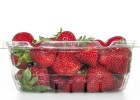Increasing shelf life of food by using advanced packaging
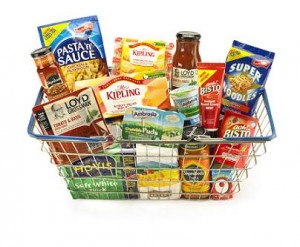 Today, the shoppers are looking for high quality, attractive and consumer-ready food that come with a long shelf life. Accepting exotic tastes and eager to try out the newer varieties, the shoppers are prepared to even pay a little extra in exchange for preparations that are safe and have a long life. In order to meet these demands, the food sector need to constantly deliver fresh, and quality food. Certain segments of the catering industry often employ production to order to satisfy the demands of their patrons but then these can result in a very expensive operation. The solution therein lies in efficient production and packaging that would guarantee taste, appearance and food safety along with longevity.
Today, the shoppers are looking for high quality, attractive and consumer-ready food that come with a long shelf life. Accepting exotic tastes and eager to try out the newer varieties, the shoppers are prepared to even pay a little extra in exchange for preparations that are safe and have a long life. In order to meet these demands, the food sector need to constantly deliver fresh, and quality food. Certain segments of the catering industry often employ production to order to satisfy the demands of their patrons but then these can result in a very expensive operation. The solution therein lies in efficient production and packaging that would guarantee taste, appearance and food safety along with longevity.
Therefore, one of the most important things in preserving food throughout the distribution chain is food packaging according to research on the food and beverage sector. Food can become contaminated with direct contact with any physical, chemical or even biological elements. In the recent years, novel food packaging has proven to not only increase the shelf life of food but also their safety and quality to a great extent.
Challenges to food packaging
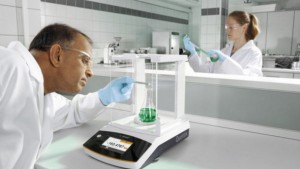 However, despite the benefits, pre-prepared and catered food also presents a complex challenge. Most of these have mixed ingredients that increase their potential for deterioration, which makes them difficult to pack. To cite an instance, if ravioli and lasagna contains meat, it would spoil at a different rate than the regular pasta. Spoil is another concern, which is caused by microorganisms leading to rancidity, discoloration, stale food and loss of taste. This makes it important to get the right combination of carbon dioxide and nitrogen balance. This balance would also depend on moisture content of food and composition of different ingredients, as they can significantly influence the speed of the growth of microbes.
However, despite the benefits, pre-prepared and catered food also presents a complex challenge. Most of these have mixed ingredients that increase their potential for deterioration, which makes them difficult to pack. To cite an instance, if ravioli and lasagna contains meat, it would spoil at a different rate than the regular pasta. Spoil is another concern, which is caused by microorganisms leading to rancidity, discoloration, stale food and loss of taste. This makes it important to get the right combination of carbon dioxide and nitrogen balance. This balance would also depend on moisture content of food and composition of different ingredients, as they can significantly influence the speed of the growth of microbes.
Market experts of food and beverage sector suggest using modified atmosphere packaging (MAP), wherein the food is heated externally by pressurized water, and internally by a patented microwave system. This helps in making the food reach its sterilization temperature, reducing process time and heat damage. This process also improves quality and ensures retention of nutrition in the food. Furthermore, US FDA approves this microwave sterilization technique.
Implementing intelligent packaging methods reduces food waste
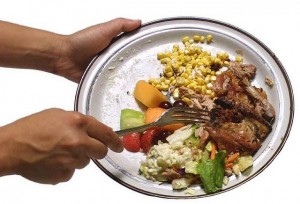 As per EU, the main causes for food waste are inadequate packaging, confusion regarding “best before” and “use by” labels along with consumer’s lack of awareness, overproduction, inadequate storage and stock management inefficiencies. About 90 million tons of food is wasted annually in Europe, and about a third of the food is wasted globally, which means 1.3 billion tons every year. As per the European commission’s research on food and beverage industry, 40% of the above mentioned food wastage happens at the retail and consumer level and if no action is taken, the waste generation is expected to reach 126 million tons every year by 2020.
As per EU, the main causes for food waste are inadequate packaging, confusion regarding “best before” and “use by” labels along with consumer’s lack of awareness, overproduction, inadequate storage and stock management inefficiencies. About 90 million tons of food is wasted annually in Europe, and about a third of the food is wasted globally, which means 1.3 billion tons every year. As per the European commission’s research on food and beverage industry, 40% of the above mentioned food wastage happens at the retail and consumer level and if no action is taken, the waste generation is expected to reach 126 million tons every year by 2020.
This data showed that usage of active technologies such as oxygen and ethylene scavenging, anti-fungal and anti-microbial, humidity control and anti-oxidants etc. and traceability indicators would benefit the whole supply chain. Furthermore, consumer behavior – such as weekly purchase rather than daily shopping and more single person units – would be more suited for the kinds of requirements that active packaging offers. Research has shown that active packaging doubles the shelf life of many perishable products compared to conventional packaging methods, for the smart packs also states the condition of the product and it does not call for best before labels.
Food manufacturers rising to the challenge
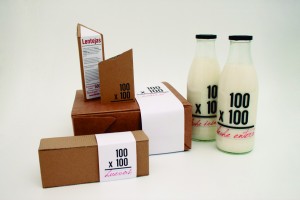 With the market being driven by the demand for fresh, better quality packaged food in convenience packages, food manufacturers are increasingly becoming concerned about methods that would help them increase product shelf life. Even though smart and active packaging technology has been around for a while, it too is seeing rapid changes. MAP and vacuum skin packaging are becoming increasingly popular. As food manufacturers rise to the challenge of sustainability, they are even using methods like oxygen scavenging packaging to increase shelf life that would use natural components. These manufacturers are also using bio-based plastics made from sugarcane waste, shrimp shells and other materials as their packaging materials, enabling them to launch shelf-stable products that reach larger markets and distribution channels without deteriorating in any way.
With the market being driven by the demand for fresh, better quality packaged food in convenience packages, food manufacturers are increasingly becoming concerned about methods that would help them increase product shelf life. Even though smart and active packaging technology has been around for a while, it too is seeing rapid changes. MAP and vacuum skin packaging are becoming increasingly popular. As food manufacturers rise to the challenge of sustainability, they are even using methods like oxygen scavenging packaging to increase shelf life that would use natural components. These manufacturers are also using bio-based plastics made from sugarcane waste, shrimp shells and other materials as their packaging materials, enabling them to launch shelf-stable products that reach larger markets and distribution channels without deteriorating in any way.


